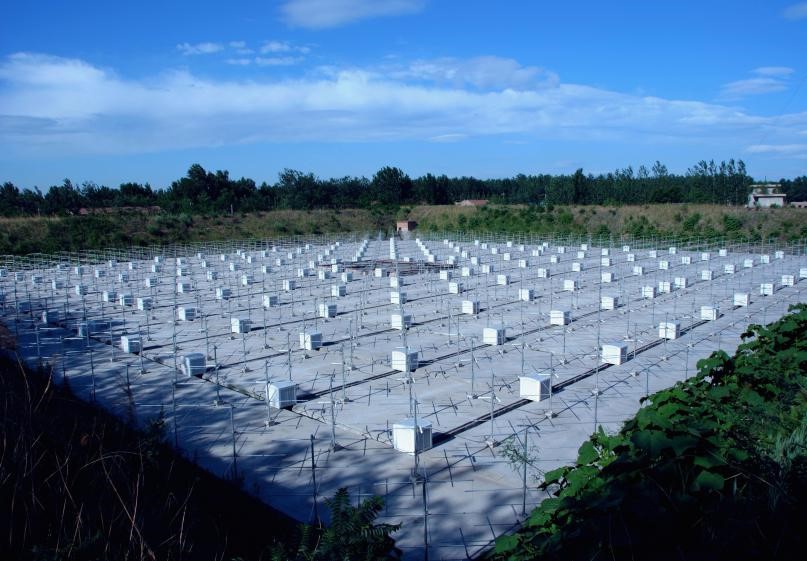Beijing MST Radar detection of the lower, middle and upper atmosphere
Date:2017-02-09
Beijing MST (Mesosphere–Stratosphere–Troposphere) Radar is one of the largest facilities within the Chinese Meridian Project (a chain of diverse ground-based remote sensing facilities for monitoring and forecasting the space environment), and is one of only two domestic MST radars. It was built by the Institute of Atmospheric Physics (IAP), Chinese Academy of Sciences (CAS), and is located at the IAP’s Xianghe field observatory in Hebei province (39°45′14.40″N, 116°59′24.00″E). Since July 2011, the Beijing MST radar has been in continuous operation observing the vertical distribution of winds and turbulence in the troposphere–lower stratosphere and mesosphere–lower thermosphere regions. As one of two MST radars within mainland China, it has produced long-term quality controlled data for understanding various significant processes and their interaction within and among layers.
Using these long-term observational data, Prof. Lü Daren and postdoctoral researcher TIAN Yufang from IAP, CAS, investigated the detection capability and data reliability of Beijing MST Radar.

Beijing MST Radar (image credit: Weidong NAN)
“To our delight, the horizontal winds derived by Beijing MST Radar and those measured by operational radiosondes in the height range of 3–25 km were highly consistent.” According to Lü and TIAN, the relatively larger differences at certain heights and in certain seasons “were mainly due to the synoptic characteristics of the horizontal wind field itself and the temporal and spatial scales of the weather systems in which the two instruments were simultaneously detecting.” They also said that “compared with similar studies conducted elsewhere in the world, the present work covered the largest height range, used the most comparison profiles and data pairs, and covered a more complete range of horizontal wind elements, including speed, direction, and the meridionaland zonal components of wind.”
Exciting results have been achieved with Beijing MST Radar’s detection of the mesosphere–lower thermosphere. Lü and TIAN explain that “within the range of 60–80 km, the MST radar can obtain data during daytime, and with a maximum data acquisition rate of 80% within the range of 70–80 km. Meanwhile, within the range of 80–100 km, data were available both day and night. In June and July during daytime, Beijing MST Radar can detect at heights up to 120 km. Their analysis also revealed that “horizontal winds within 80–100 km measured by Beijing MST Radar and the nearby Langfang Meteor Radar showed good agreement and were also consistent with HWM07 model results”.
Overall, these results show that Beijing MST Radar operates at an internationally advanced level in terms of its detecting capability and data quality, and will continue to play a significant role in studies of lower-, middle- and upper-atmosphere dynamics.
References
1. Tian, Y. F. and D. R. Lü, 2017: Comparison of Beijing MST Radar and radiosonde horizontal wind measurements. Adv. Atmos. Sci., 34(1), 39–53, doi: 10.1007/s00376-016-6129-4.
2. Tian, Y. F. and D. R. Lü, 2016: Preliminary analysis of Beijing MST radar observation results in the mesosphere-lower thermosphere. Chinese J. Geophysics, 59(2), 440–452, doi: 10.6038/cjg20160204.
Contact: Daren Lü, ludr@mail.iap.ac.cn; Yufang Tian, tianyufang@mail.iap.ac.cn
